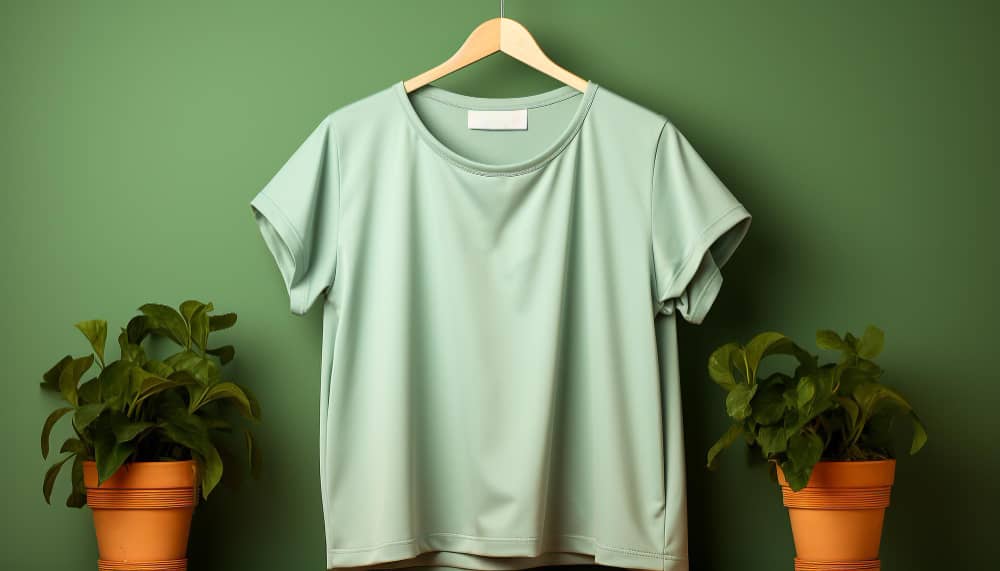Home » Polyester Fabric
Why Polyester Fabric is Your Best Choice for Wrinkle-free Clothing
When it comes to choosing the right fabric for your clothing, polyester fabric stands out as a top choice for those looking for durability and wrinkle resistance. Polyester fabric has long been a staple in the fashion industry for its ability to maintain its shape and resist wrinkles, making it the perfect option for those who want to look polished and put-together at all times. In this blog post, we will explore the many reasons why polyester fabric is your best choice for wrinkle-free clothing.

The History and Development of Polyester Fabric
Polyester fabric emerged as a groundbreaking development in the early 20th century, representing a significant leap forward in the realm of synthetic fibres. Its inception was a response to the growing need for materials that could offer the durability and ease of maintenance that natural fibres like cotton and wool could not. The introduction of polyester marked a new era in textile manufacturing, as it presented a cost-effective, strong, and flexible alternative to traditional fabrics.
The journey of polyester fabric through the decades is a testament to the advancements in chemical engineering and textile technology. Initially, its acceptance was mixed, with early versions of the fabric being criticised for their lack of breathability and comfort. However, relentless innovation led to the refinement of polyester fibres, making them softer, more breathable, and more versatile than ever before. These improvements expanded polyester’s applications beyond just clothing, solidifying its status in the global textile market.
Polyester’s evolution did not stop with enhancements to comfort and feel. Environmental concerns sparked research into more sustainable production methods, resulting in the creation of recycled and bio-based polyesters. This shift not only addressed ecological issues but also opened new doors for polyester fabric in terms of sustainability and resource efficiency.
As it stands, polyester fabric’s history is a narrative of transformation and progress, from its synthetic origins to becoming a mainstay in both fashion and industrial applications. Its development reflects the ongoing pursuit of material excellence, balancing performance with environmental responsibility.
Unpacking the Properties of Polyester That Make It Stand Out
Polyester fabric’s inherent characteristics are what distinctly position it as a superior choice for those seeking both functionality and aesthetics in their wardrobe. Beyond its notable wrinkle resistance, polyester boasts exceptional durability. This resilience against wear and tear means garments retain their colour and shape over many washes, outlasting their cotton counterparts and providing better value over time. Additionally, polyester’s quick-drying nature makes it an ideal fabric for active wear and for those on the go, reducing laundry time and energy consumption.
The fabric’s synthetic makeup allows for a high degree of versatility in texture and weight, enabling designers to mimic the feel of natural fibres like silk and wool, thus broadening its appeal and application in fashion. This adaptability extends to its capability to blend seamlessly with other materials, enhancing their properties or achieving the perfect balance of comfort and performance. Furthermore, polyester’s superior dye-holding properties ensure that colours remain vibrant and less prone to fading, even after prolonged exposure to sunlight or washing, making it a favoured choice for bold and patterned attire.
Polyester’s role in fashion is complemented by its contribution to the functional and aesthetic aspects of various products, illustrating the breadth of its application. Its unique qualities not only cater to the demands of modern lifestyles but also reflect a commitment to innovation in textile development.

The Versatility of Polyester Fabric in Fashion and Beyond
Polyester fabric’s adaptability extends far beyond its renowned wrinkle-resistance, marking it as a cornerstone in the textile industry for a myriad of clothing options. This synthetic fibre has the unique capability to mimic the textures and weights of natural fabrics, allowing designers to innovate across the fashion spectrum. From the elegant drapery of evening wear to the robustness required in outdoor attire, polyester can be engineered to meet diverse fashion needs.
Its capacity for holding vibrant dyes opens up a palette of possibilities for designers seeking to make bold statements with their collections. Moreover, polyester’s compatibility with other fibres enhances fabric blends, marrying the benefits of different materials to achieve the ultimate in comfort, style, and functionality.
In addition to its prominence in the wardrobe, polyester’s utility spans to non-apparel uses, such as in home furnishings where its strength and aesthetic flexibility are equally valued. Whether it’s in the creation of soft, durable upholstery that stands up to daily use, or in bedding that combines comfort with ease of care, polyester continues to be a favoured choice. Its application in industrial materials further illustrates its robustness and adaptability, serving purposes as varied as filtration fabrics and automotive interiors. The scope of polyester’s use, therefore, underscores not just its versatility in fashion, but its comprehensive integration into the fabric of daily life, reflecting an ongoing synergy between technological advancement and creative expression.
Caring for Your Polyester Garments: Tips and Tricks
Maintaining the longevity and appearance of your polyester clothing is straightforward, provided you follow some basic care guidelines. Washing polyester garments in cool or lukewarm water is advisable, as this helps to preserve the fabric’s integrity and prevent any potential shrinkage or damage that can occur with higher temperatures. Opting for a gentle cycle in your washing machine can also prevent excessive wear and tear on the fabric.

When it comes to drying, air drying is the preferred method for polyester items. If you’re using a tumble dryer, ensure it’s set to a low heat to avoid damaging the fibres. Polyester is quick-drying by nature, which not only makes it a convenient option for busy lifestyles but also contributes to energy conservation by reducing the need for prolonged drying times.
Ironing polyester clothing is rarely necessary due to its inherent wrinkle resistance. However, if you do find the need to iron certain pieces, it’s crucial to use a low heat setting and ideally place a protective cloth between the iron and the garment. This precaution helps to guard against any potential heat damage or melting that could occur if the iron is too hot.
For stain removal, treating spots as soon as they appear increases the chance of successful removal. Use a gentle stain remover suitable for synthetic fabrics and test it on a small, inconspicuous area first to ensure it won’t affect the garment’s colour or texture.
By adhering to these simple care tips, your polyester garments can remain a vibrant and vital part of your wardrobe for years to come, continually offering the convenience and aesthetic appeal that first drew you to them.
Addressing Common Misconceptions About Polyester Fabric
Polyester fabric, over the years, has been burdened with a variety of myths that misrepresent its true nature and capabilities. A prevalent belief is that polyester lacks the comfort and breathability of natural fibres, such as cotton. This perception fails to consider the significant strides in textile technology that have resulted in polyester blends which offer a comfort level on par with, or even superior to, that of many natural fabrics. Innovations have led to the creation of microfibre polyester, which is exceptionally soft and wicks moisture away, making it a go-to choice for active wear and daily comfort.
Another widely held notion is that polyester is detrimental to the environment, overshadowing efforts to mitigate its ecological footprint. It’s important to recognise the advancements in recycling processes and the shift towards bio-based polyesters. These initiatives reflect the textile industry’s commitment to reducing waste and utilising renewable resources, thereby challenging the narrative that polyester is inherently non-eco-friendly.
Furthermore, the misconception that polyester garments are difficult to care for persists, despite evidence to the contrary. Polyester’s easy-care attributes, including its stain resistance and quick-drying properties, actually support a more sustainable lifestyle by conserving water and energy.
In rectifying these misconceptions, it is crucial to acknowledge the evolution of polyester fabric as a testament to innovation, offering a blend of comfort, practicality, and environmental consciousness that aligns with contemporary values.

The Future of Polyester Fabric: Sustainable Practices and Innovations
The trajectory of polyester fabric is steering towards eco-friendliness and innovation, reflecting a growing environmental consciousness within the textile industry. The advent of recycled polyester has marked a significant shift, utilising discarded plastic bottles to fabricate fibres, thereby reducing landfill waste and conserving petroleum resources. Concurrently, the emergence of bio-based polyesters offers a greener alternative, sourcing materials from renewable biological sources like maize and sugar cane.
These advancements not only exemplify the industry’s commitment to reducing the carbon footprint but also enhance polyester’s appeal by aligning it with sustainable living principles. Moving forwards, ongoing research and development in this field are expected to yield even more environmentally friendly production methods and material innovations, potentially transforming polyester into a beacon of sustainability in the fashion and textile sectors.